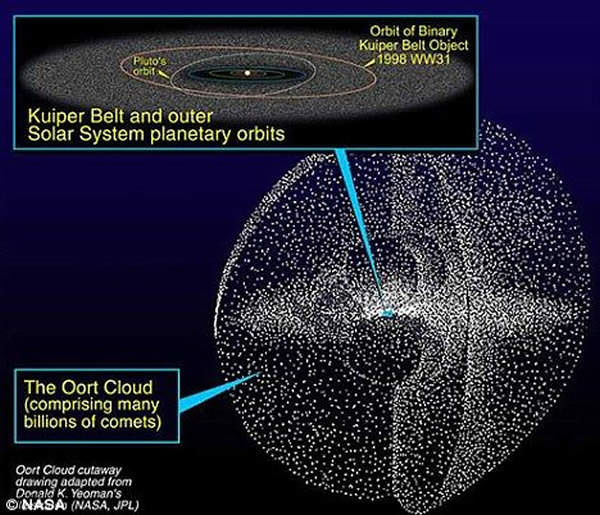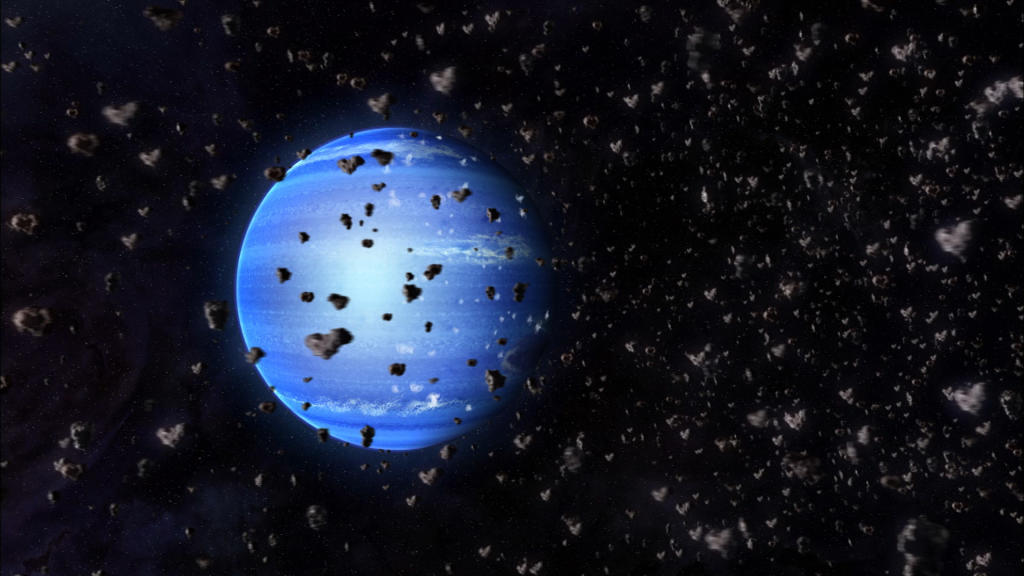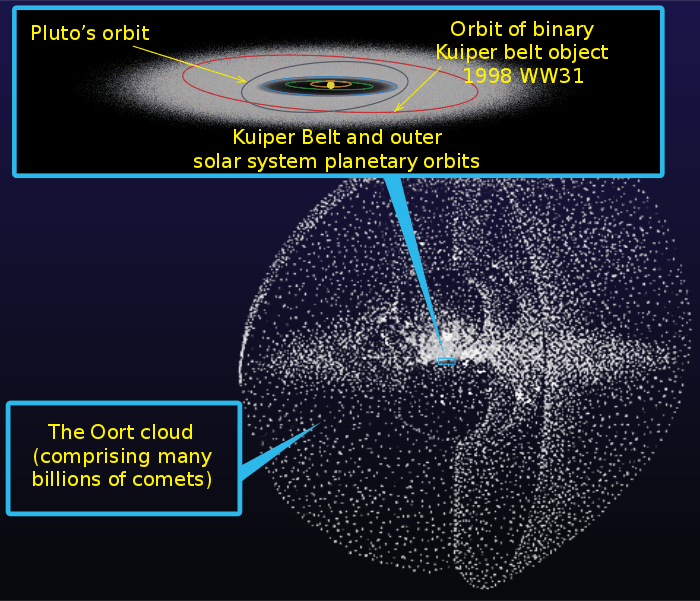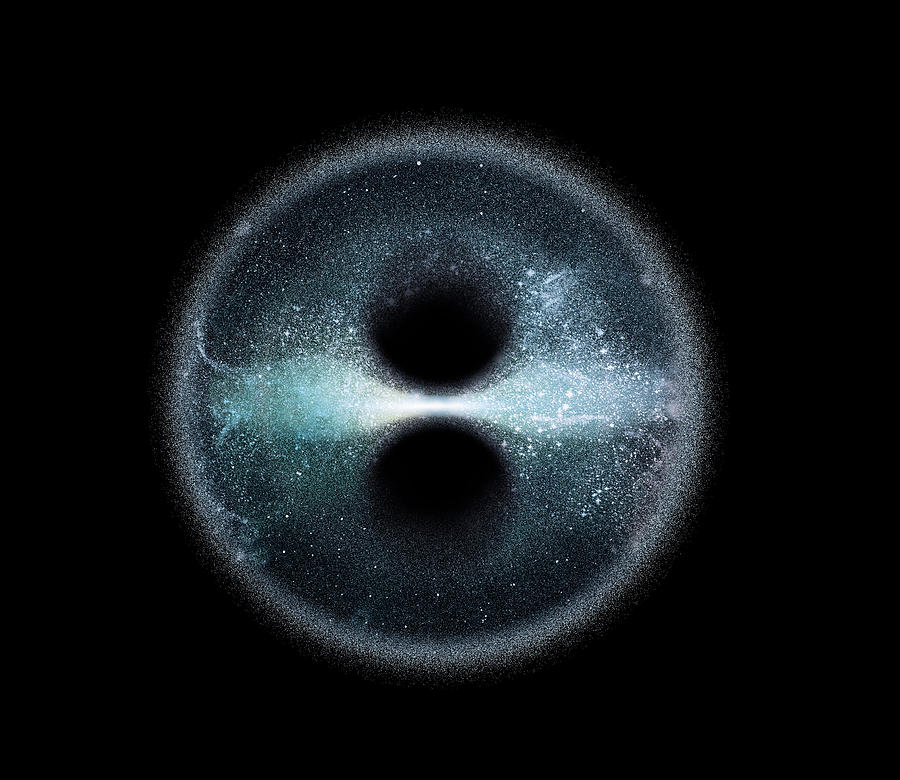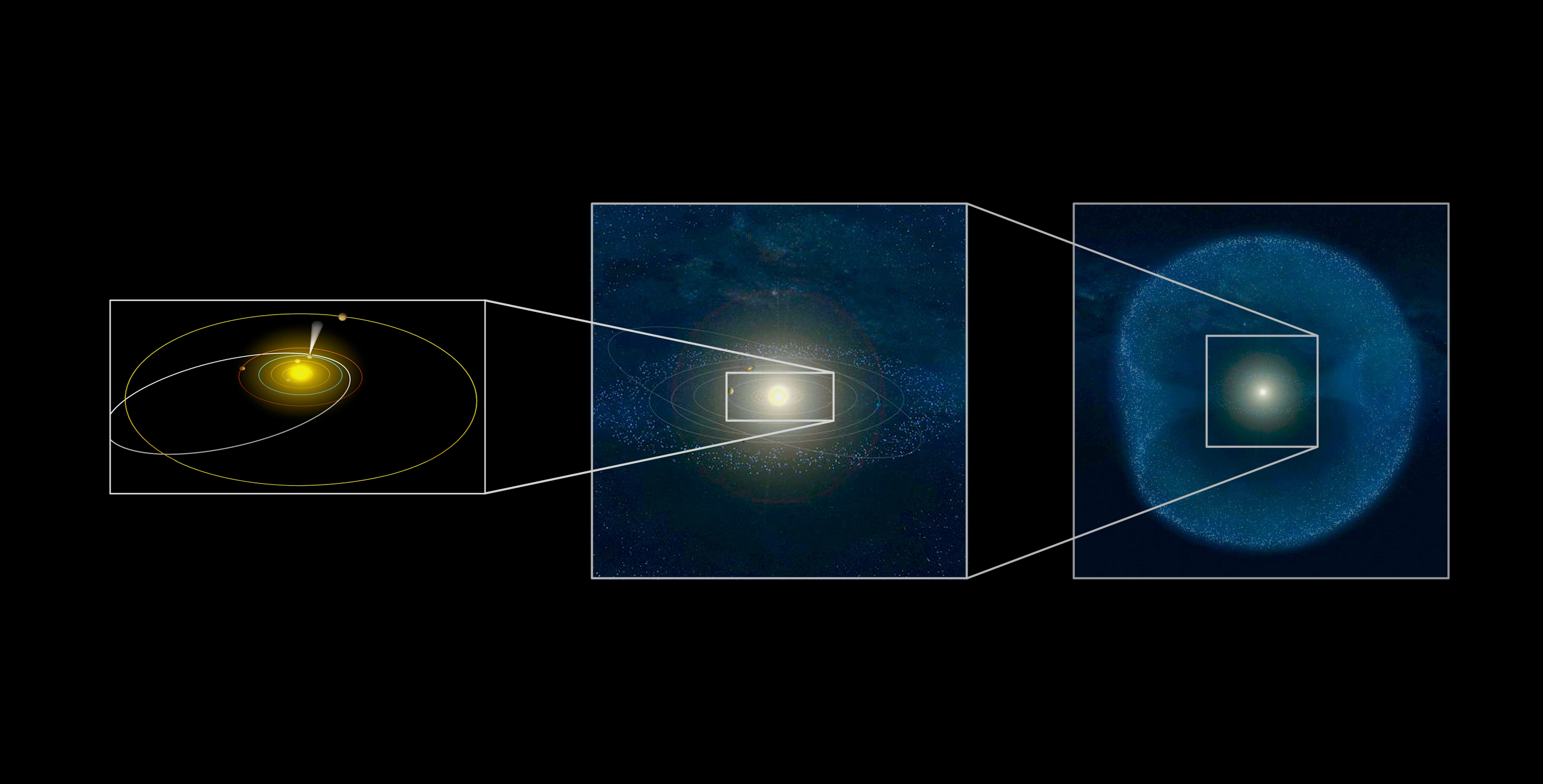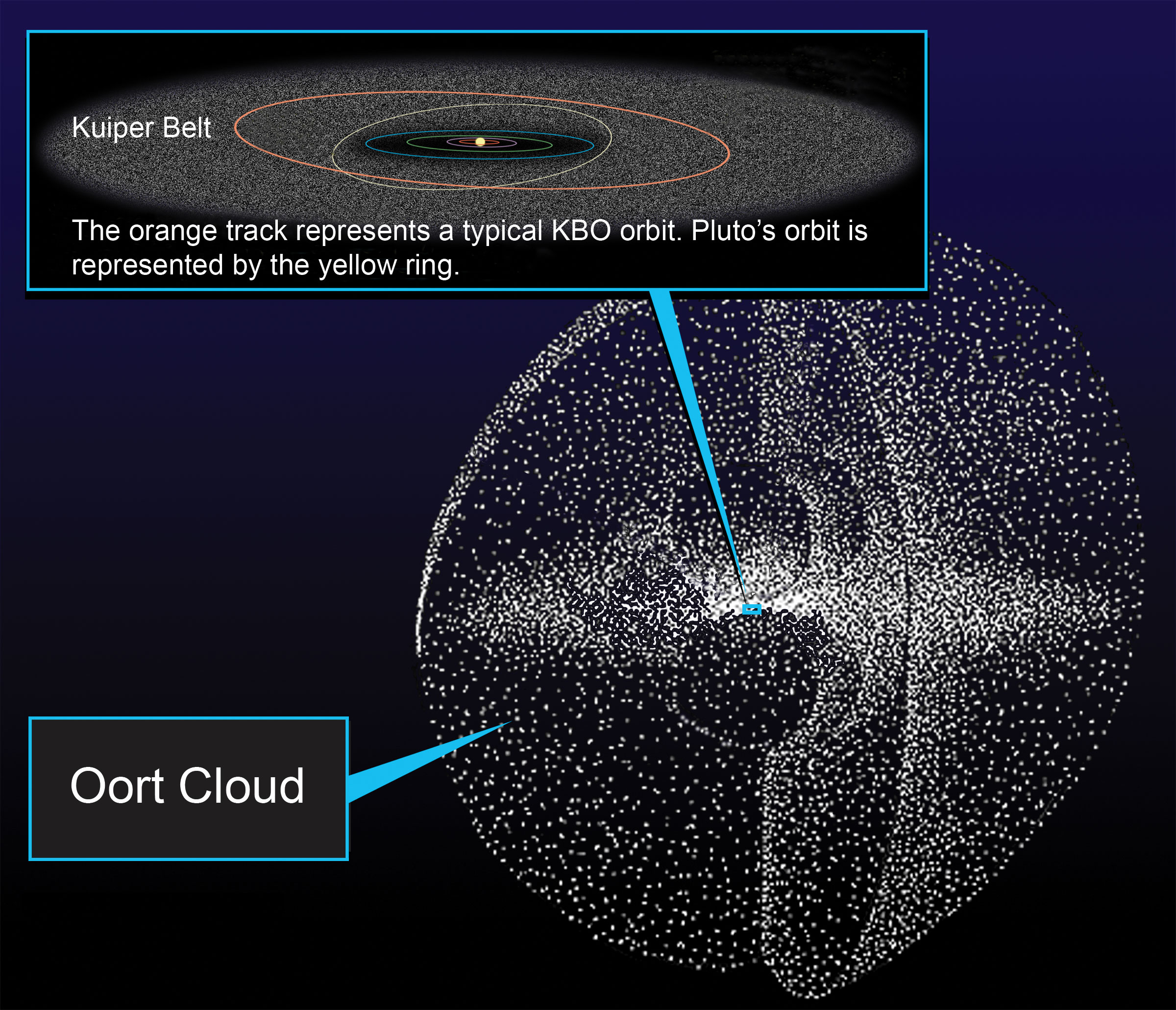How Did The Oort Cloud Form
How Did The Oort Cloud Form - He was looking to understand why some comets in the solar. Web the oort cloud was named after dutch astronomer jan hendrik oort, who discovered it in the 1950s. Web it was first postulated in 1950 by jan hendrik oort after he noted that observed comets had the following in common: As the solar nebula collapsed gravitationally its core region becomes dense. Web 1 answer cosmic defect feb 17, 2016 please check the explanation. Web the most widely accepted hypothesis is that the oort cloud's objects initially coalesced much closer to the sun as part of the same process that formed the planets. The oort cloud (named for dutch astronomer jan oort) is a hypothetical halo of icy rocks and small planetesimals that theoretically occupy the far outer reaches of our solar. How do cometary bodies form, and how do oort cloud objects become comets? The oort cloud is made of icy pieces of space debris the sizes of mountains and sometimes. Beyond our solar system lies the oort cloud.
Web the oort cloud was named after dutch astronomer jan hendrik oort, who discovered it in the 1950s. Web the oort cloud was discovered in 1950 by the dutch astronomer jan hendrik oort to explain why there continue to be new comets with elongated orbits in our solar. Web the oort cloud must have been created from icy planetesimals that originally accreted in the outer part of the protoplanetary disk and were then scattered far. There are two ways to look at it: Web it was first postulated in 1950 by jan hendrik oort after he noted that observed comets had the following in common: He was looking to understand why some comets in the solar. Web recent studies have shown that the formation of the oort cloud is broadly compatible with the hypothesis that the solar system formed as part of an embedded. Web the short answer: The oort cloud is made of icy pieces of space debris the sizes of mountains and sometimes. The first happened billions of years ago, at the.
There are two ways to look at it: Web answer (1 of 2): The oort cloud is made of icy pieces of space debris the sizes of mountains and sometimes. As the solar nebula collapsed gravitationally its core region becomes dense. He was looking to understand why some comets in the solar. Web the oort cloud was named after dutch astronomer jan hendrik oort, who discovered it in the 1950s. Web the oort cloud was discovered in 1950 by the dutch astronomer jan hendrik oort to explain why there continue to be new comets with elongated orbits in our solar. Web 101 195 have you ever wondered what lies at the farthest reaches of our solar system? The oort cloud is a hypothetical, spherical distribution of. Web it was first postulated in 1950 by jan hendrik oort after he noted that observed comets had the following in common:
Oort Cloud Facts Interesting Facts about the Oort Cloud
The oort cloud is a hypothetical, spherical distribution of. Web the oort cloud was named after dutch astronomer jan hendrik oort, who discovered it in the 1950s. The oort cloud is made of icy pieces of space debris the sizes of mountains and sometimes. Beyond our solar system lies the oort cloud. Web the oort cloud must have been created.
What is the Oort Cloud? Universe Today
Web 1 answer cosmic defect feb 17, 2016 please check the explanation. The first happened billions of years ago, at the. Web answer (1 of 2): Web the oort cloud was discovered in 1950 by the dutch astronomer jan hendrik oort to explain why there continue to be new comets with elongated orbits in our solar. Web recent studies have.
What is the Oort Cloud? Universe Today
Web answer (1 of 2): The oort cloud (named for dutch astronomer jan oort) is a hypothetical halo of icy rocks and small planetesimals that theoretically occupy the far outer reaches of our solar. There are two ways to look at it: Web the oort cloud was named after dutch astronomer jan hendrik oort, who discovered it in the 1950s..
How Did the Oort Cloud Form? How The Universe Works Discovery Science
Web answer (1 of 2): He was looking to understand why some comets in the solar. As the solar nebula collapsed gravitationally its core region becomes dense. Web it was first postulated in 1950 by jan hendrik oort after he noted that observed comets had the following in common: Web the oort cloud must have been created from icy planetesimals.
The Oort Cloud Facts, Information, History & Definition
Web 1 answer cosmic defect feb 17, 2016 please check the explanation. The oort cloud (named for dutch astronomer jan oort) is a hypothetical halo of icy rocks and small planetesimals that theoretically occupy the far outer reaches of our solar. Web the oort cloud was discovered in 1950 by the dutch astronomer jan hendrik oort to explain why there.
What is the Oort cloud? Quora
The oort cloud is a hypothetical, spherical distribution of. He was looking to understand why some comets in the solar. The first happened billions of years ago, at the. Web 1 answer cosmic defect feb 17, 2016 please check the explanation. There are two ways to look at it:
Ort Cloud Structure a dynamic form Oort cloud, Solar system, Clouds
Beyond our solar system lies the oort cloud. The oort cloud (named for dutch astronomer jan oort) is a hypothetical halo of icy rocks and small planetesimals that theoretically occupy the far outer reaches of our solar. As the solar nebula collapsed gravitationally its core region becomes dense. Scientists believe that a massive “bubble” of ice and dust surrounds the.
Oort Cloud Photograph by Claus Lunau
The oort cloud is a hypothetical, spherical distribution of. He was looking to understand why some comets in the solar. How do cometary bodies form, and how do oort cloud objects become comets? As the solar nebula collapsed gravitationally its core region becomes dense. The oort cloud (named for dutch astronomer jan oort) is a hypothetical halo of icy rocks.
Birth of a Cloud by Brian Koberlein
Scientists believe that a massive “bubble” of ice and dust surrounds the solar. Web the oort cloud was named after dutch astronomer jan hendrik oort, who discovered it in the 1950s. Web the oort cloud was discovered in 1950 by the dutch astronomer jan hendrik oort to explain why there continue to be new comets with elongated orbits in our.
New dwarf found sneaking through the inner Oort Cloud Ars Technica
The oort cloud is a hypothetical, spherical distribution of. Web 1 answer cosmic defect feb 17, 2016 please check the explanation. Web it was first postulated in 1950 by jan hendrik oort after he noted that observed comets had the following in common: Web recent studies have shown that the formation of the oort cloud is broadly compatible with the.
Web 1 Answer Cosmic Defect Feb 17, 2016 Please Check The Explanation.
He was looking to understand why some comets in the solar. Web the short answer: Beyond our solar system lies the oort cloud. Web answer (1 of 2):
Web Recent Studies Have Shown That The Formation Of The Oort Cloud Is Broadly Compatible With The Hypothesis That The Solar System Formed As Part Of An Embedded.
Web it was first postulated in 1950 by jan hendrik oort after he noted that observed comets had the following in common: Scientists believe that a massive “bubble” of ice and dust surrounds the solar. How do cometary bodies form, and how do oort cloud objects become comets? The oort cloud is a hypothetical, spherical distribution of.
The Oort Cloud Is Made Of Icy Pieces Of Space Debris The Sizes Of Mountains And Sometimes.
The first happened billions of years ago, at the. Web 101 195 have you ever wondered what lies at the farthest reaches of our solar system? There are two ways to look at it: As the solar nebula collapsed gravitationally its core region becomes dense.
Web The Most Widely Accepted Hypothesis Is That The Oort Cloud's Objects Initially Coalesced Much Closer To The Sun As Part Of The Same Process That Formed The Planets.
Web the oort cloud was named after dutch astronomer jan hendrik oort, who discovered it in the 1950s. Web the oort cloud must have been created from icy planetesimals that originally accreted in the outer part of the protoplanetary disk and were then scattered far. Web the oort cloud was discovered in 1950 by the dutch astronomer jan hendrik oort to explain why there continue to be new comets with elongated orbits in our solar. The oort cloud (named for dutch astronomer jan oort) is a hypothetical halo of icy rocks and small planetesimals that theoretically occupy the far outer reaches of our solar.


